
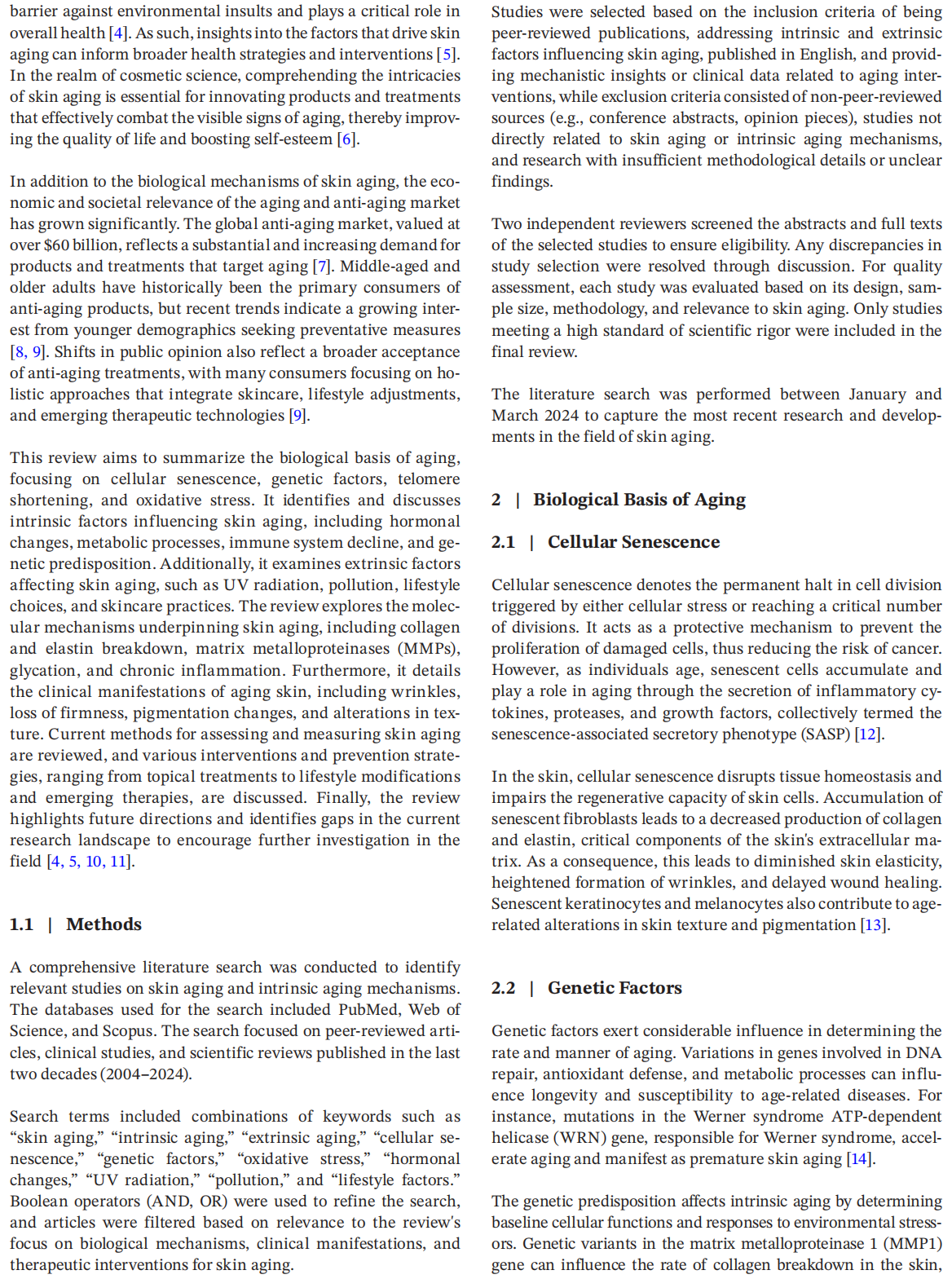
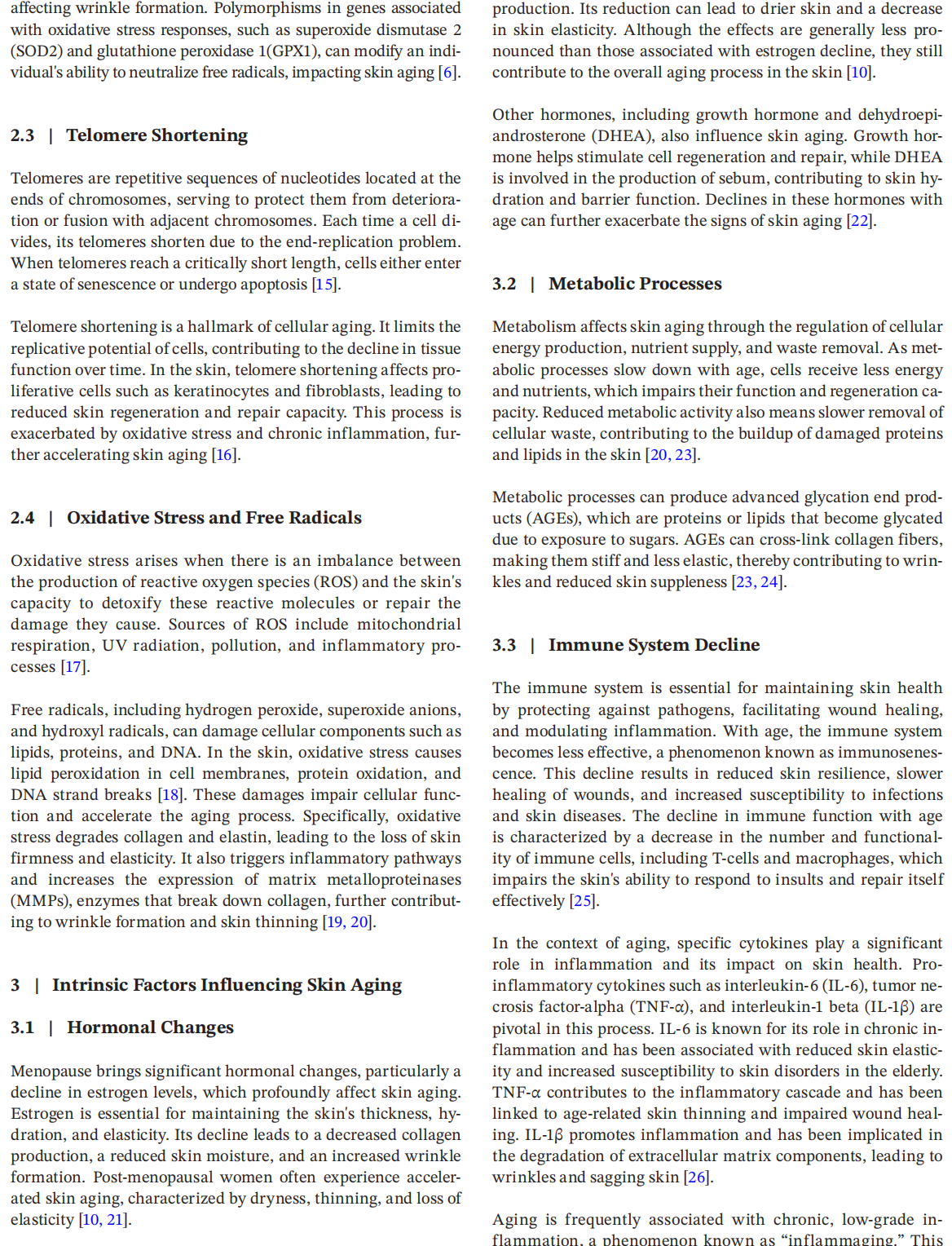
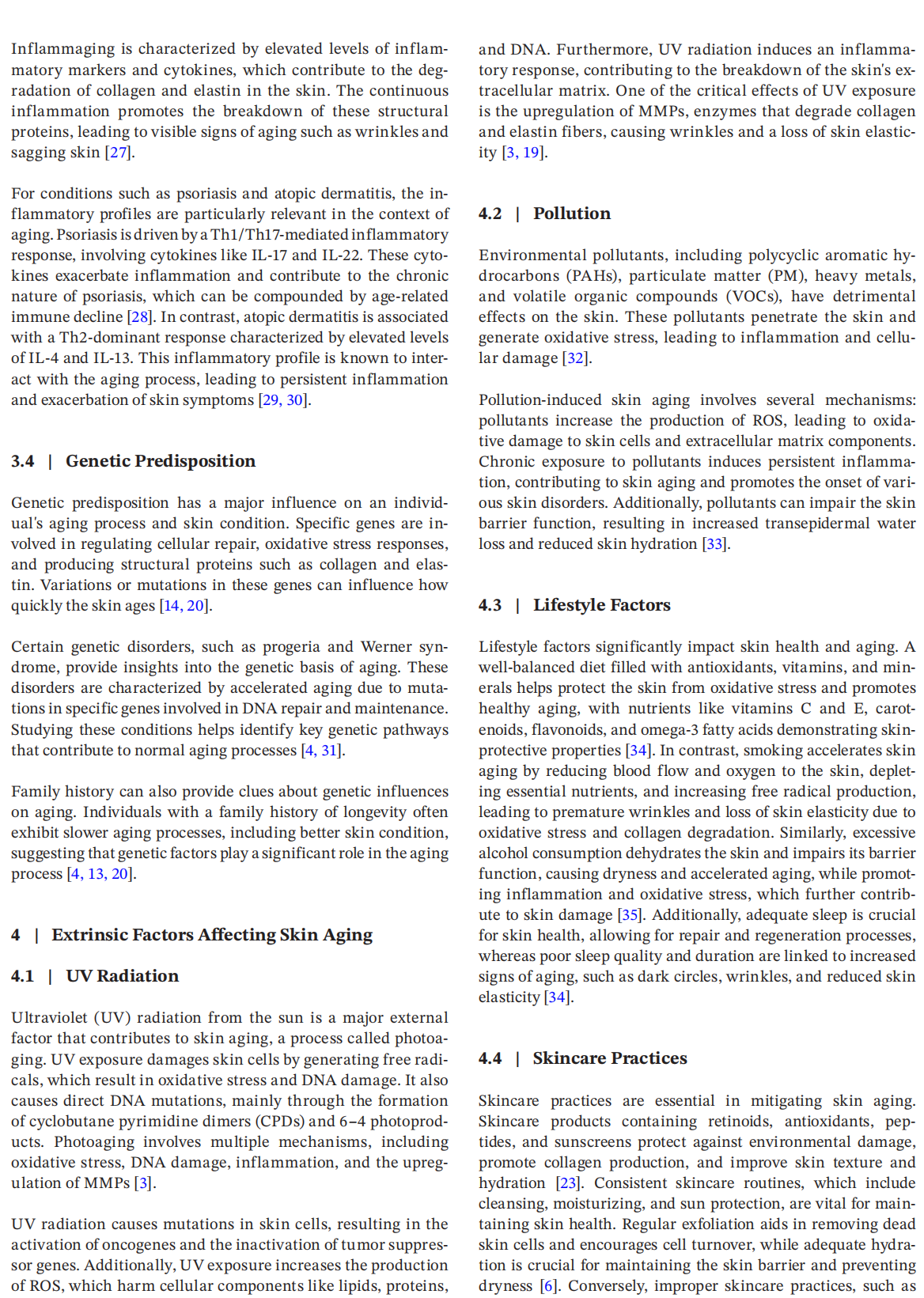
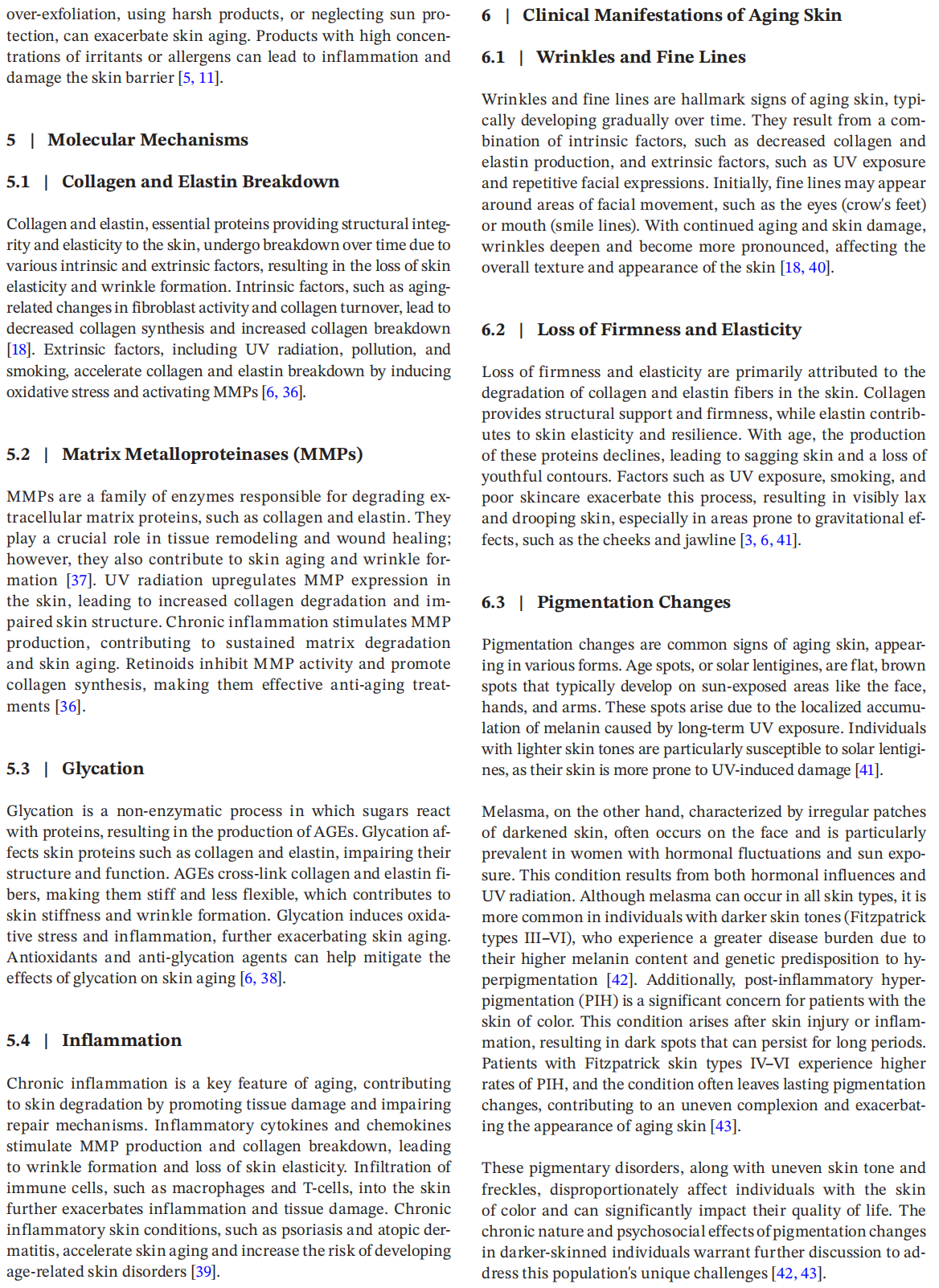
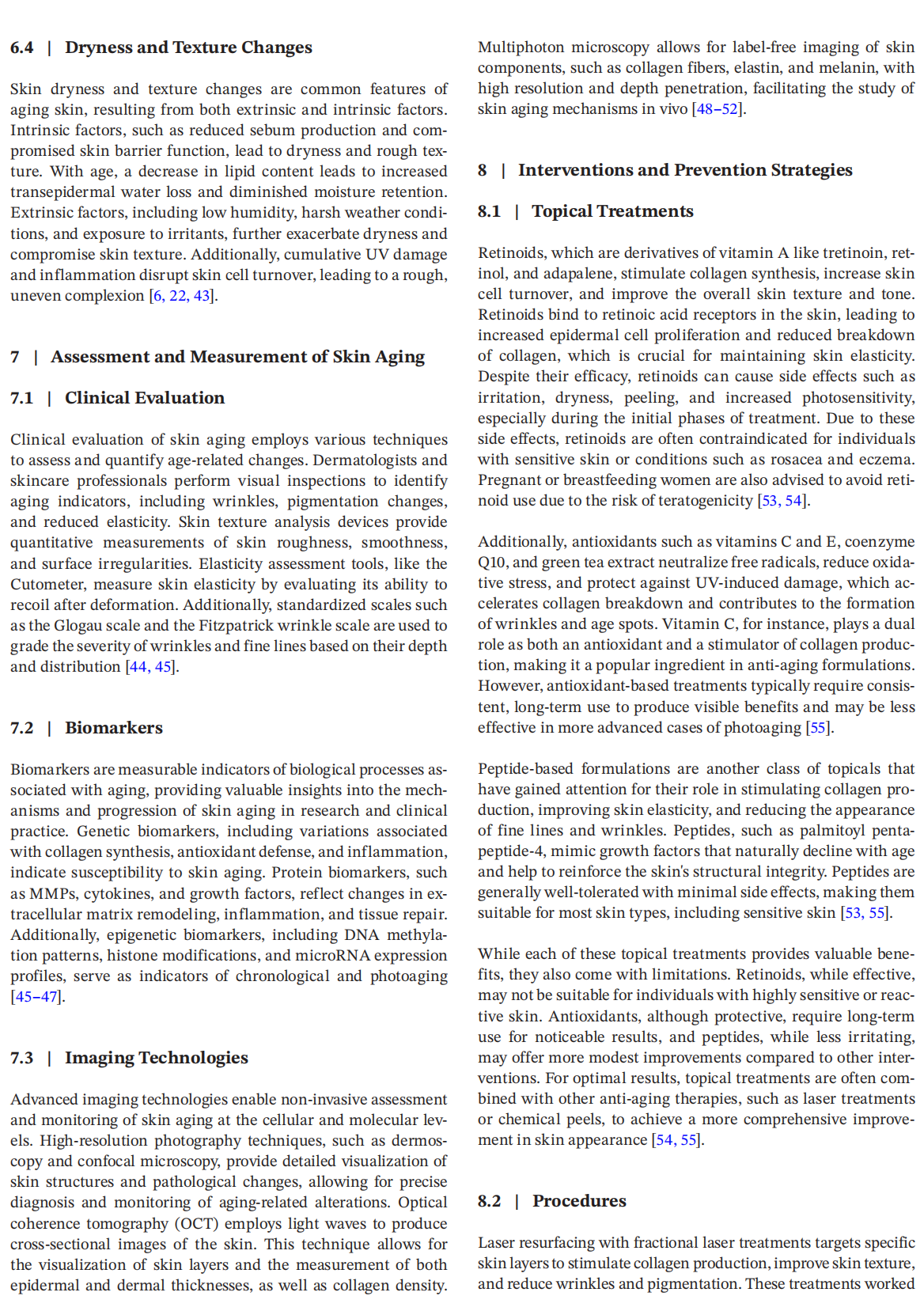
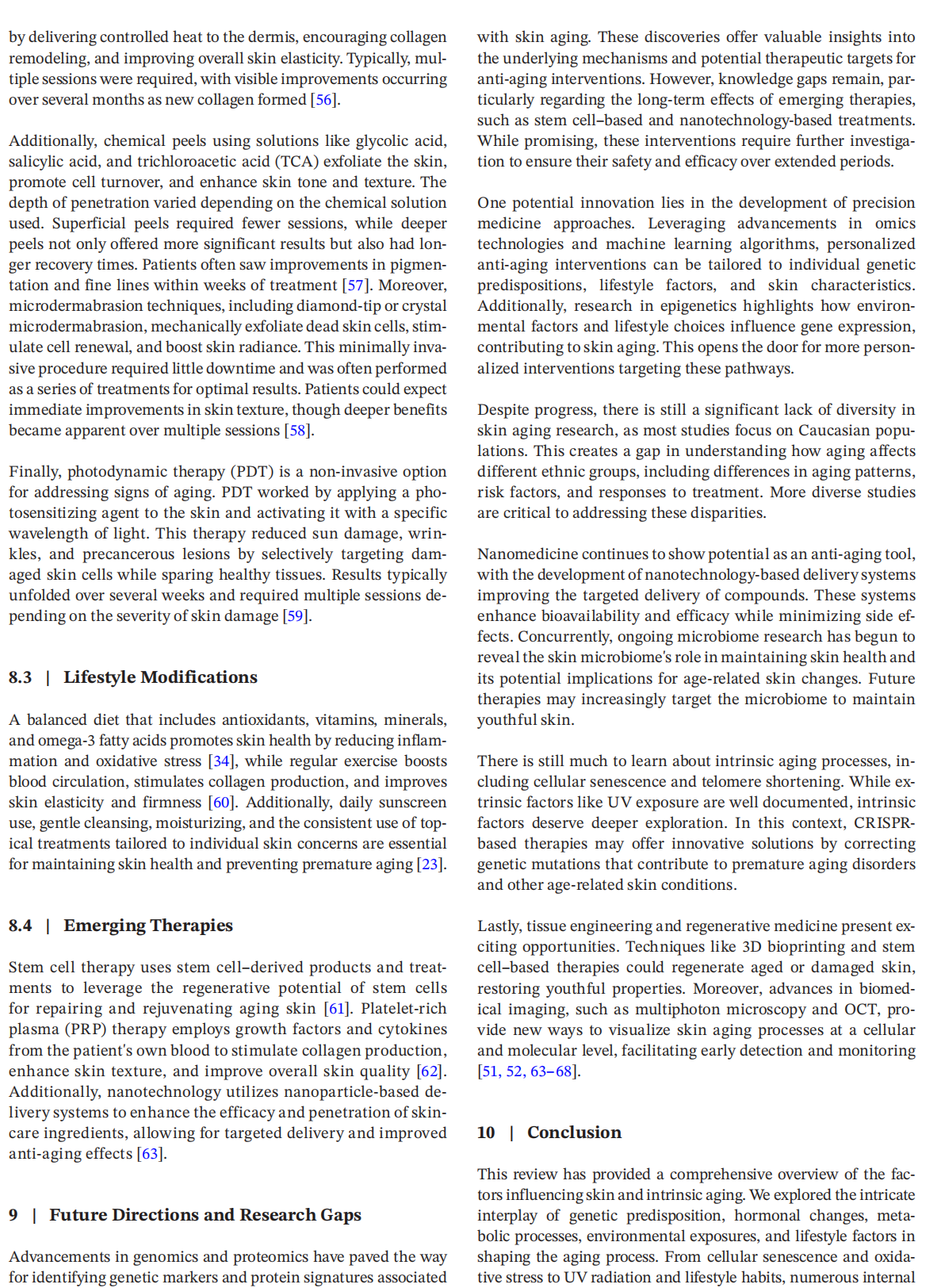
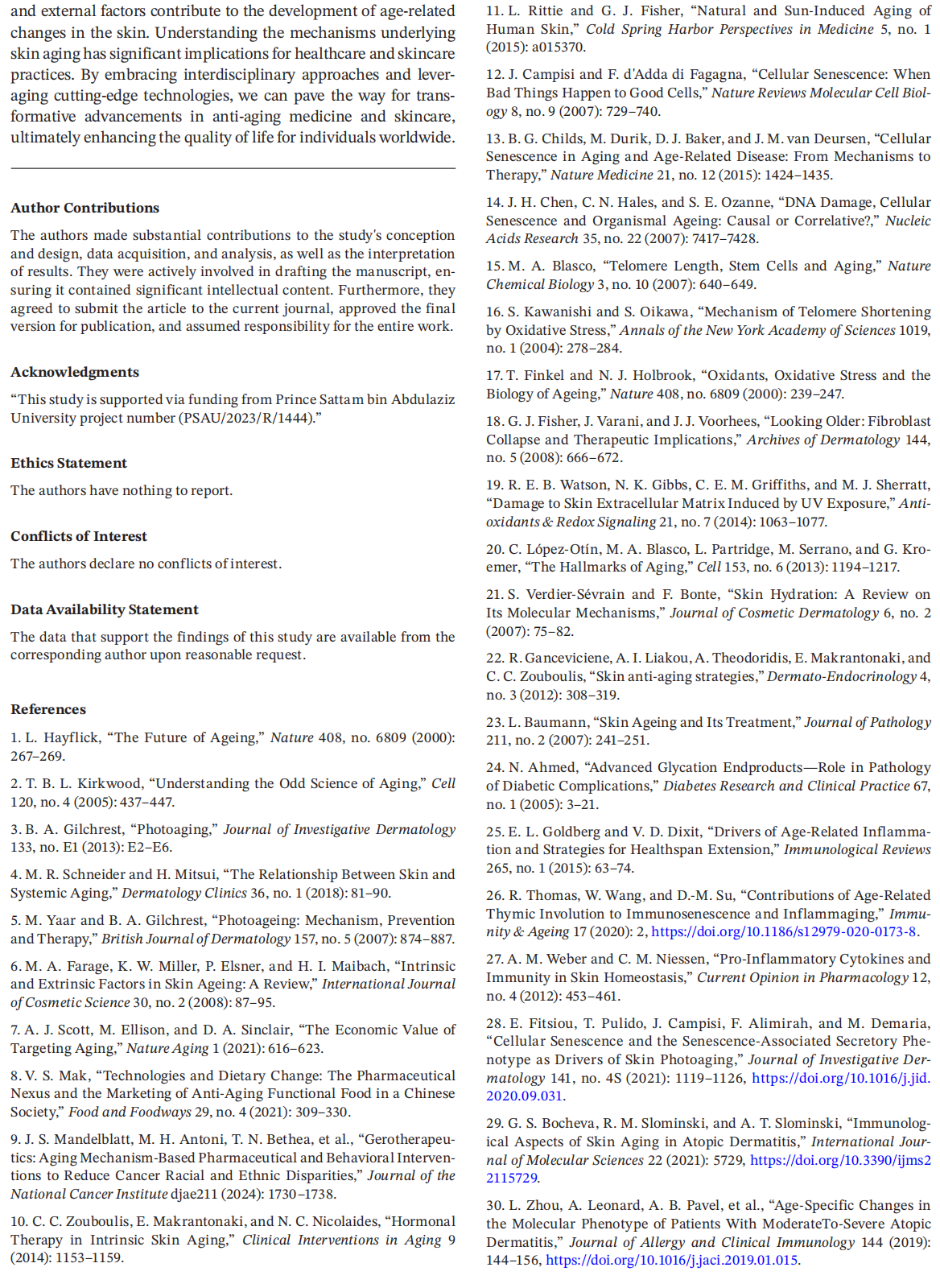
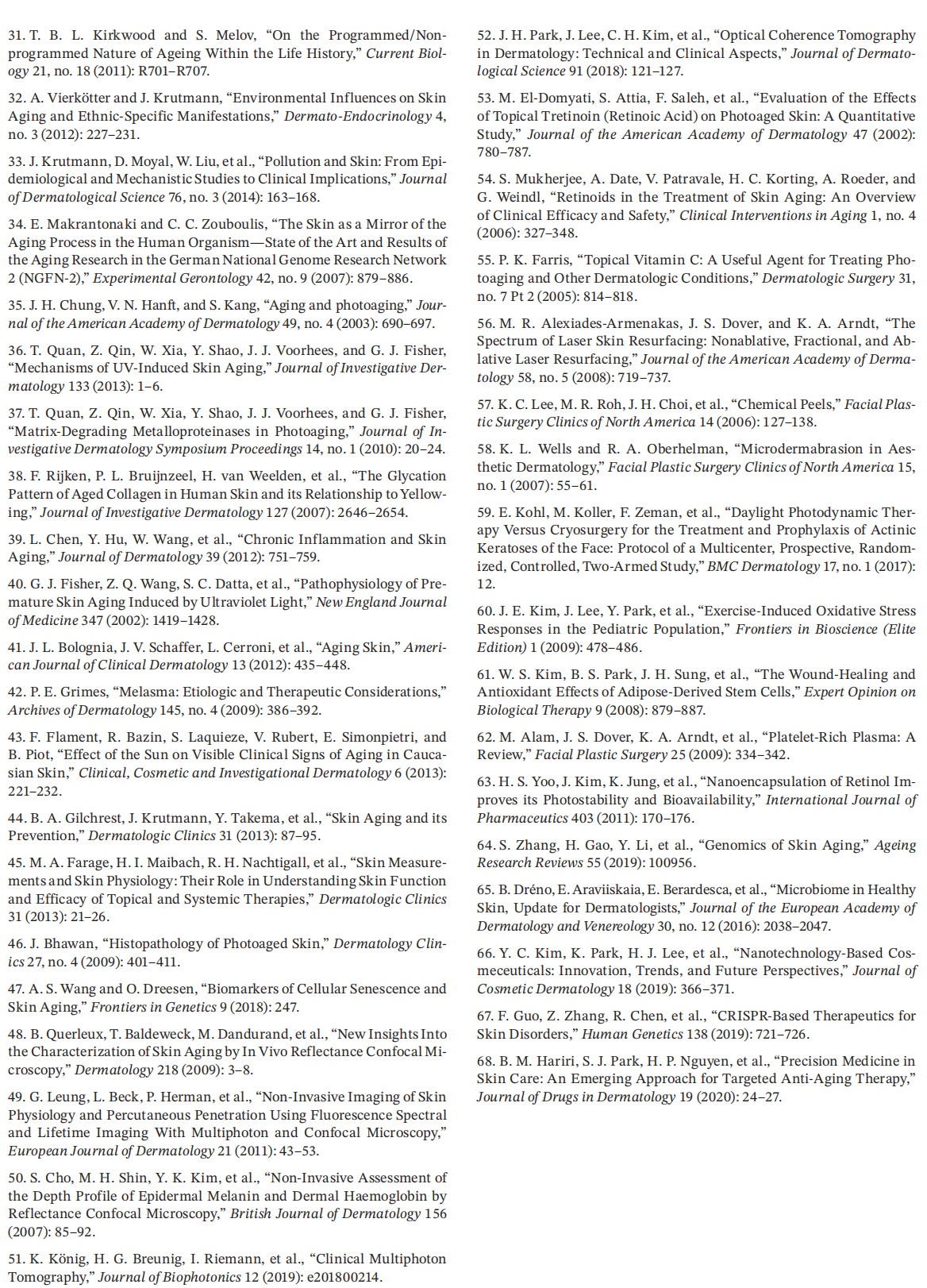
This article is excerpted from the Journal of Cosmetic Dermatology, 2025 by Wound World.
Ramadan S. Hussein1 | Salman Bin Dayel1 | Othman Abahussein1 | Abeer Ali El-Sherbiny2
1 Dermatology Unit, Department of Internal Medicine, College of Medicine, Prince Sattam Bin Abdulaziz University, Al-Kharj, Saudi Arabia | 2 Department of Medical Laboratory, College of Applied Medical Sciences, Prince Sattam bin Abdulaziz University, Al-Kharj, Saudi Arabia
Correspondence: Ramadan S. Hussein (该Email地址已收到反垃圾邮件插件保护。要显示它您需要在浏览器中启用JavaScript。)
Received: 20 August 2024 | Revised: 27 September 2024 | Accepted: 8 November 2024
Funding: The authors received no specific funding for this work.
Keywords: biological mechanisms | environmental factors | extrinsic aging | intrinsic aging | skin aging
ABSTRACT
Background/Aim: Aging involves a progressive deterioration in physiological functions and increased disease susceptibility, impacting all organs and tissues, especially the skin. Skin aging is driven by intrinsic factors (genetics, cellular metabolism) and extrinsic factors (environment, lifestyle). Understanding these mechanisms is vital for promoting healthy aging and mitigating skin aging effects. This review aims to summarize the key factors influencing skin and intrinsic aging, providing a comprehensive understanding of the underlying mechanisms and contributing elements.
Methods: A comprehensive literature review was conducted, focusing on peer-reviewed journals, clinical studies, and scientific reviews published within the last two decades. The inclusion criteria prioritized studies that addressed intrinsic and extrinsic mechanisms of skin aging. To ensure the relevance and quality of the selected sources, a systematic approach was used to assess study design, sample size, methodology, and the significance of the findings in the context of skin aging.
Findings: The review identifies major internal factors, such as cellular senescence, genetic predisposition, telomere shortening, oxidative stress, hormonal changes, metabolic processes, and immune system decline, as pivotal contributors to intrinsic aging. External factors, including UV radiation, pollution, lifestyle choices (diet, smoking, alcohol consumption, and sleep patterns), and skincare practices, significantly influence extrinsic skin aging. The interplay between these factors accelerates aging processes, leading to various clinical manifestations like wrinkles, loss of skin elasticity, pigmentation changes, and texture alterations.
Conclusion: A comprehensive understanding of both extrinsic and intrinsic factors contributing to skin aging is essential for developing effective prevention and intervention strategies. The insights gained from this review highlight the importance of a multifaceted approach, incorporating lifestyle modifications, advanced skincare routines, and emerging therapeutic technologies, to mitigate the effects of aging and promote healthier, more resilient skin.









This article is excerpted from the Journal of Cosmetic Dermatology, 2025 by Wound World.
